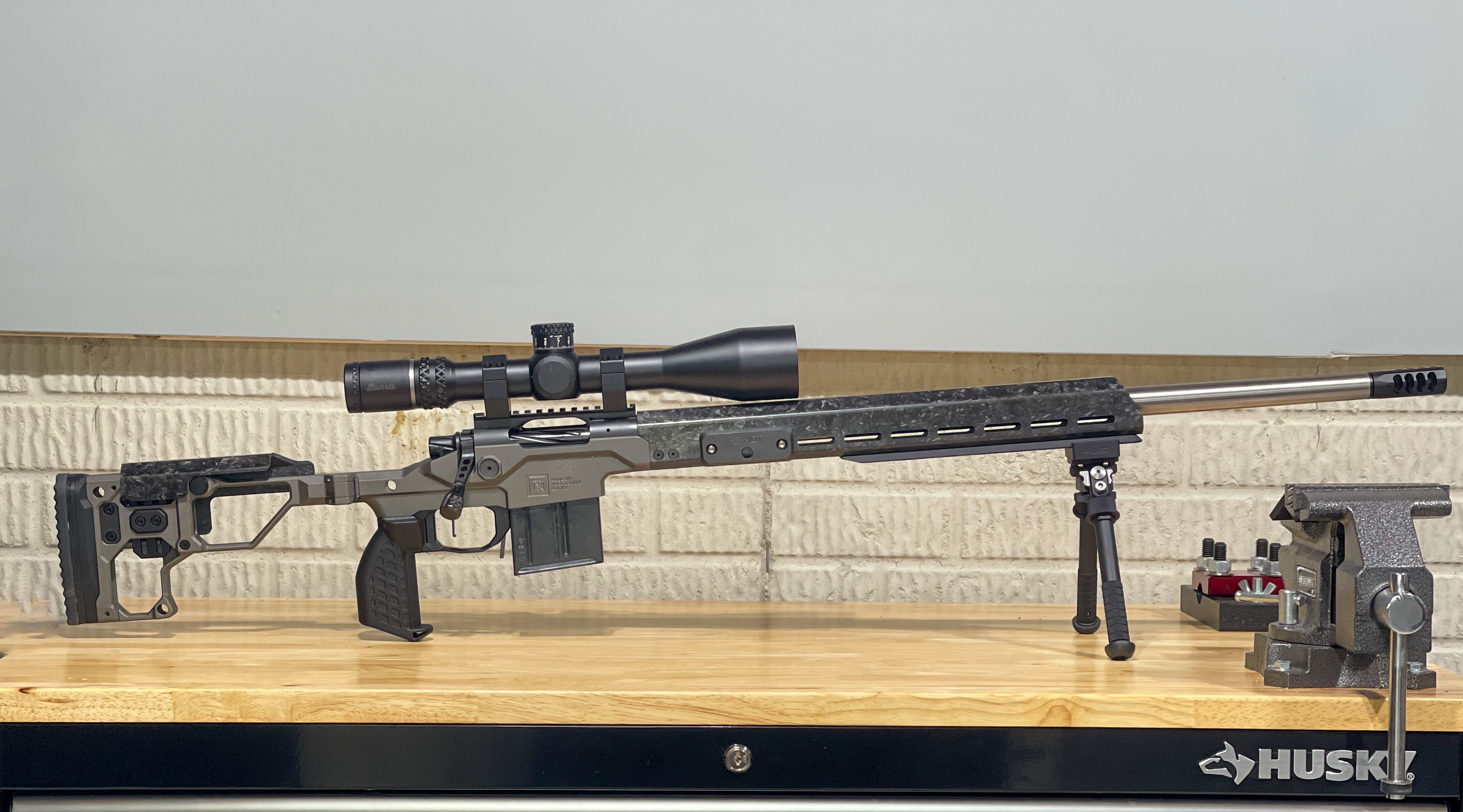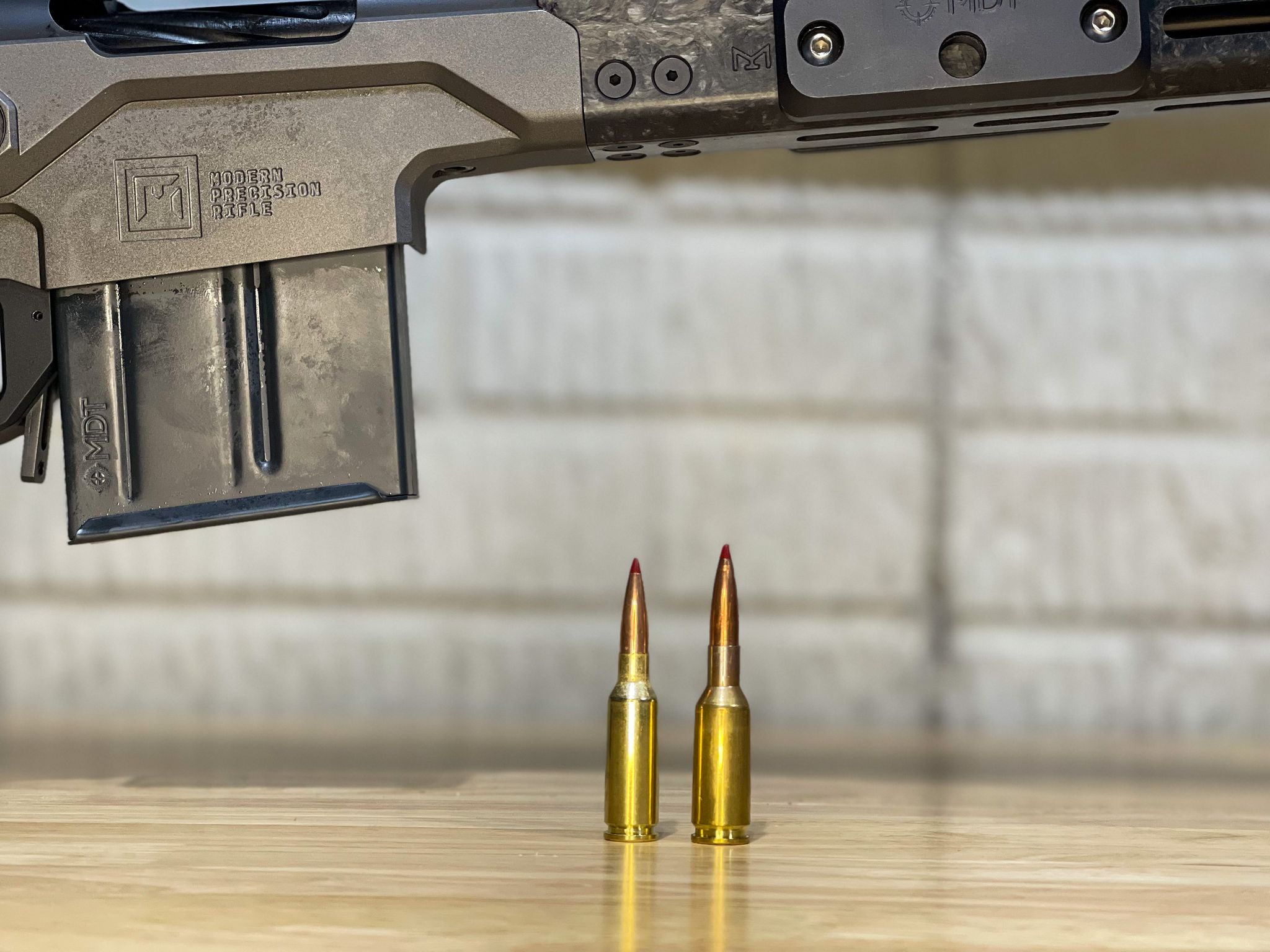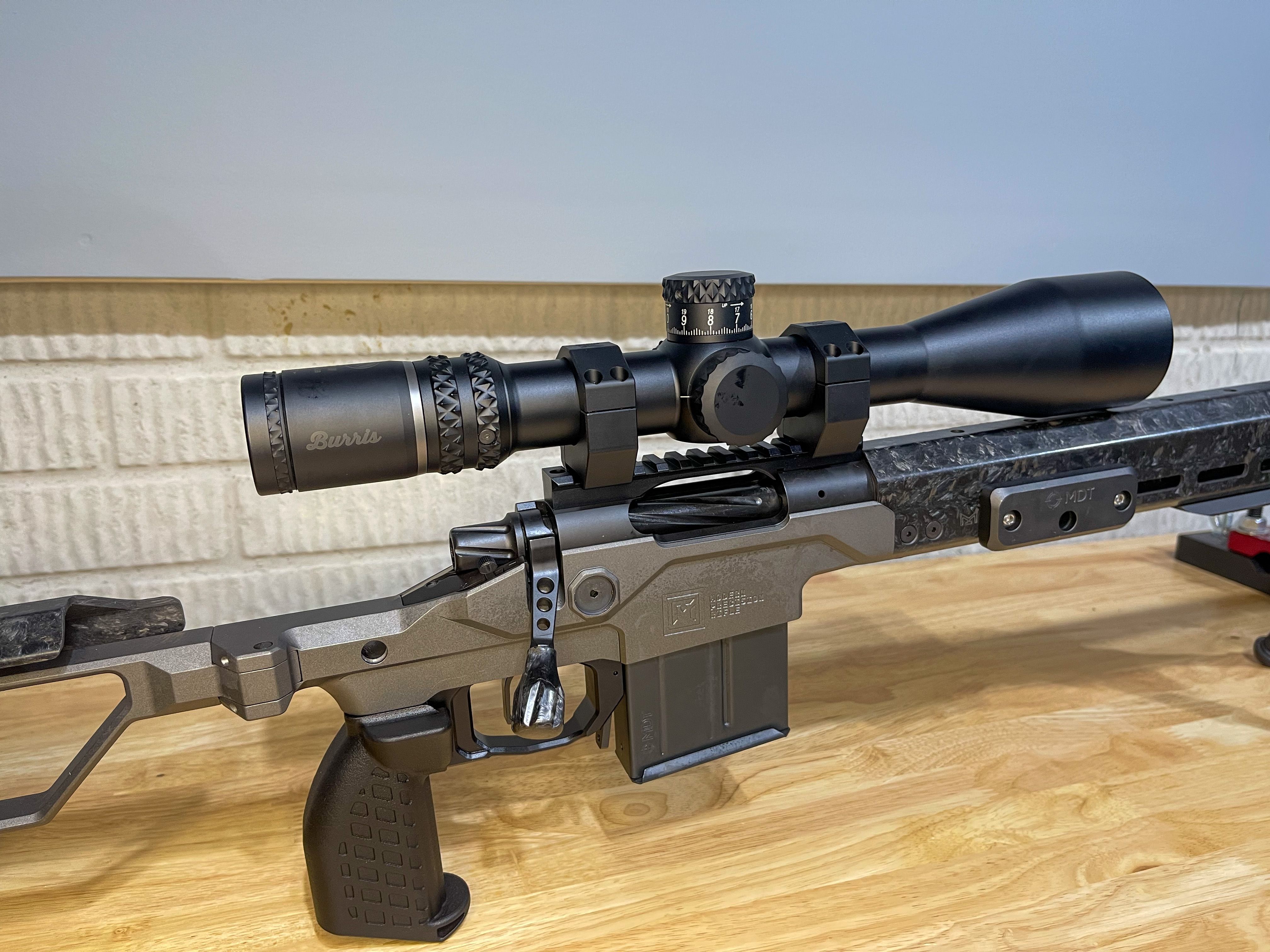THE GUN BENCH: PRS PRODUCTION RIFLE
Posted by SF on Nov 15th 2023
Welcome to the Gun Bench. This is a series where we at Straight Talk bring our readers into the thought process behind how we set up our gear for various roles and scenarios. There is a saying that purpose drives gear. In the gun world, that saying rings clear. With each selection of equipment, there is a purpose—whether it be for hunting, competitive shooting, home defense, or survival—that equipment matters and must stand up to the task at hand. This series looks to help with the thought process behind each piece of kit, so that you, the reader, can have the best available information. One important note, Straight Talk is Ohio-based. Some items may or may not be legal in your state. Also, not every state has a Constitutional Carry or Castle Doctrine in place. So please, educate yourself on the laws that you must abide by.

PRS Production Division, what is it?
The Precision Rifle Series, like many competitive sports, has a variety of divisions to help level the playing field and offer more opportunities for people to be involved. New shooters don’t always want to compete in the “open” division, where the top Pros generally shoot. Trust me, lining up against a Ken Sanoski or Allison Zane is intimidating, let alone trying to compete in the same division as them when you are a novice. The open division rules are lax, there aren’t any strict restrictions on the firearms or optics a shooter uses, other than caliber. (A shooter cannot exceed 30 caliber or 3200FPS). Here, rifle setups could soar to $10,000+. For many people, getting involved, and dropping that kind of cash on something new is a non-starter, especially now. With the economy currently sliding, and both rifle and reloading components soaring in price, people simply can’t afford to shoot as much. That is where the Production Division comes into play.
THE RULES
Production division was designed for new shooters to take an off-the-shelf rifle and optic and go compete. Here, there are restrictions on cost. From PRS: “Production Division rifles shall not exceed $3,000 as listed on the company’s website. The optic shall not exceed $2,500 as listed on the company’s website.” Further rules show that the manufacturer must be substantiated, with a minimum production run of 50 rifles before being qualified as a production class gun.
For the person starting in PRS for the first time, the PRS Production Division is a great route! Thanks to the introduction and rise of the 6.5 Creedmoor and the Ruger Precision Rifle (RPR), the market has exploded with factory offerings of precision rifles in a variety of calibers. Many manufacturers are now listing and building rifles that fit within the production division parameters. For example, Ruger offers multiple rifle options within the RPR line that fit these rules. The standard RPR retails at $1879 (though the street price is more affordable) and the RPR custom shop variant comes in at $2499. Other popular manufacturers include Bergara, Savage, and Daniel Defense. Even manufacturers such as Christensen Arms and Sig Sauer have released models to fit within this category. As for caliber, 6.5mm Creedmoor is very popular within the production division and it’s still relatively easy to find quality off-the-shelf ammo. However, 6mm Creedmoor and newcomer, 6mm ARC, are gaining footholds.Just like rifle manufacturers, optic manufacturers are building and offering riflescopes to fit within the rule parameters. Leupold’s very popular Mark 5HD line comes in between $2099.99 and $2299.99. This optic offers top-tier performance for the production category. For more affordable, but still quality options, Vortex offers their Strike Eagle and Venom 5-25x56 at MSRP values of $899.99 and $699.99, respectively. Other options include Nightforce, Sig Sauer, and Burris. The Burris XTR III 5.5-30X56 is newer to the world of PRS and offers an impressive array of features with quality glass that nestles right between the Leupold Mark 5 and Vortex Strike Eagle. It has an MSRP of $1740 but the street price is about $1449.99.
MY RIFLE

For the rifle, I started with caliber. I wanted to shoot Hornady’s new 6mm ARC in a production gun. I feel that it offers a perfect companion to my 6mm BR in terms of performance. I can also find off-the-shelf match ammo with relative ease. The selection of the ARC shortened the list of rifles substantially, as a result, I landed on the Christensen Arms MPR Competition. This rifle checks a lot of boxes for things I was looking for. Most people familiar with Christensen think of carbon fiber hunting rifles. That is their mainstay, however, they’ve expanded into the PRS world with the MPR Competition. For starters, the gun segues from a carbon wrapped to a stainless-steel heavy profile match barrel that comes in at 26” long. The muzzle end sports a three-port self-timing muzzle break and has a 5/8X24 thread pitch. The handguard measures 17” long, is lined with M-Lok slots, and is made of carbon fiber. The chassis is made of 7075 billet aluminum and is finished in a tungsten Cerakote that contrasts well with the carbon fiber handguard. The stock does fold to the bolt size—a convenient feature for travel—and has adjustments for length-of-pull (via spacers) and height of the comb. As for the action, it is based on the Remington 700 and maintains the classic two-lug bolt. The bolt uses an oversized bolt knob that can be swapped, and the body is spiral fluted. Additionally, the action uses an M16 extractor, with an enlarged ejection port, and is finished in black nitride. Finally, Christensen added a Trigger Tech Special flat-face trigger.
ADD-ONS
While the stock model will suffice for most people, I felt some upgrades were needed. For starters, I wanted the gun a bit more adaptable to various shooting scenarios. For this, I went with the MDT 10.25” M-lok to the Arca rail adapter. With Arca I can quickly adjust my bipod, add a plate, or switch to a tripod. Next, to balance the rifle and help in recoil management, I bolted on a couple of MDTs M-lok forend weights. This gives me better recoil management and helps balance the rifle when shooting off bags. Eventually, I’d like to change out the pistol grip, but for now, the factory option will suffice.
OPTIC

Over the past 10 years or so, the optics industry has exploded. There are more optics brands today than ever before. Likewise, the volume of PRS-marketed optics is daunting, with options coming from previously unknown commodities such as Arken, Sightmark, SwampFox, Tract Optics, etc. However, I tend to stick with known manufacturers such as Leupold, Vortex, Nightforce, and Burris. Considering all the options on the market and trying to stay within a respectable budget, I selected the Burris XTR III5.5-30X56. This optic can be found at around $1449.99. It also fits in a rather interesting category. There has been an eruption of optics suited for PRS in the $500-$1000 range. Similarly, there are also a lot of optics that exceed $2000. But the middle ground is rather lean. I find the Burris to be in a class of itself. It has excellent optical capability and a reticle that is like other options on the market. Its magnification range means it can handle a wide range of shooting disciplines but is at a price that is more approachable for a lot of shooters. The XTR III sports a 34mm main tube and possesses 26 MILs (or 90 MOA) of total elevation adjustment. That is respectable (or a bit low) for a scope in this range. Furthermore, the optic is illuminated with 11 red and 11 green brightness settings. I have the optic sitting in a set of Vortex Premier 34mm rings in medium-plus height.
CLOSING THOUGHTS
With my production division rifle, I attempted to build something that felt familiar to my standard match rifle. I don’t get a lot of time to get away and shoot a match and with the increased cost of loading and logistics, I wanted something that I could grab and go, yet feel confident with. While factory match ammo will not hold up to fine-tuned loaded ammo, I still find I can go out and have fun, which is the main reason why many of us compete. If time is limited or if the cost of a custom rifle is above means, consider production division. While I find the max price thresholds to be a bit high, it still offers a spot for newcomers in the sport. More important, it gets people out shooting and enjoying the hobby.







